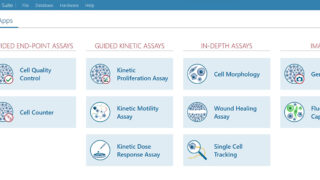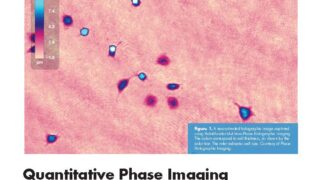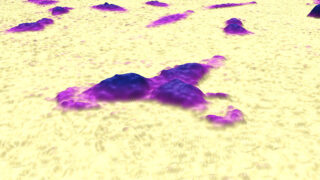A study of cancer cells by digital holographic imaging, fluorescence and a combination thereof

Not all those who wander are lost - A study of cancer cells by digital holographic imaging, fluorescence and a combination thereof
Single Cell Analysis
Cancer kills millions of people every year and is one of humanity’s greatest health challenges. Studies in cancer research show that single cells, or small sub-populations of cells, tend to behave differently than the rest of the population data. When using population-based data there is a risk to miss important information of those single cells that behave differently to drugs, or individual cells that migrate and turn into metastasis. Cancer stem cells are cancer cells that resist treatment and tend to form metastases. Because of this, there is an interest in finding cancer treatment that target these cancer stem cells.
Label-free method
Digital holographic imaging is a label-free, non-toxic quantitative method that can be used for single cell analysis for a long time period. Sofia Kamlund, PhD, Lund University and Phase Holographic Imaging, has used this method in her thesis Not all those who wander are lost – A Study of Cancer Cells by Digital Holographic Imaging, Fluorescence and a combination there of.
The technique allows the researcher to follow changes over time and evaluate cell response on living cells. Single cell analysis helps receiving the whole picture. Tracking the cells require many images. In the thesis, individual cell tracking was done by a semi-automated system, HStudio, using time-lapse, a technique that also can be used on cell populations. The data and images can be used to track, follow and compare factors like cell morphological changes, cell migrations or cell number over time and between control group and treated cells.
 Sofia Kamlund, PhD, Lund University
Sofia Kamlund, PhD, Lund University
Tell me about your background
I’ve studied Master of Science in Engineering Nanotechnology where I specialized in bionano technology. My interest in biology grew during these years so to combine Math and Physics with Biology, I became an industrial PhD student at Phase Holographic Imaging and worked with Professor Stina Oredsson at Lund University in her breast cancer stem cell research group.
What is your thesis about?
I have studied salinomycin, a drug that is found to target cancer stem cells. My thesis shows that treatment with salinomycin decreased cell proliferation in cancer stem cells already within 24 hours of treatment.
Why did you focus on single cell tracking?
The heterogeneity of cancer cells, both between people and within individual tumors, is well known. A small amount of the cancer stem cells within a tumor are capable of inducing new tumors. This is something the majority of the cancer cell population can’t do. I wanted to study the small amount of the population that behave differently. It is of great importance to find these cancer stem cells. If you find them and target them with drugs, then you would increase the amount of people suffering from cancer and decrease metastasis.
We have studied breast cancer. For breast cancer, salinomycin is a treatment that is 100 times more efficient when it comes to these cancer stem cells than the more commonly used drug paclitaxel. I used time-lapse holographic movies to capture data regarding cell division of single cells. I could then create cell family trees where I was able to track single cells and mark them differently depending on their behavior. In addition to investigating cell division with HoloMonitor M4, I could also track cell movements in the acquired time-lapse data using the software HStudio. Our studies showed that sub-populations were hiding in the cell population. If we had only based our conclusion on the entire population, then we’d miss relevant information. The cell study of the population in hypoxia showed that the cells stopped dividing after 72 hours. But the time-lapse data showed that there still were cells dividing! Data of individual cell are hiding within the population data.
What happens next?
I will work with my two papers to get them published.
![]()
Image of a cell tree.
![]()
Single Cell Tracking: HoloMonitor image of cell view 0 hours.
![]()
Single Cell Tracking: HoloMonitor image of cell view after 24 hours.


